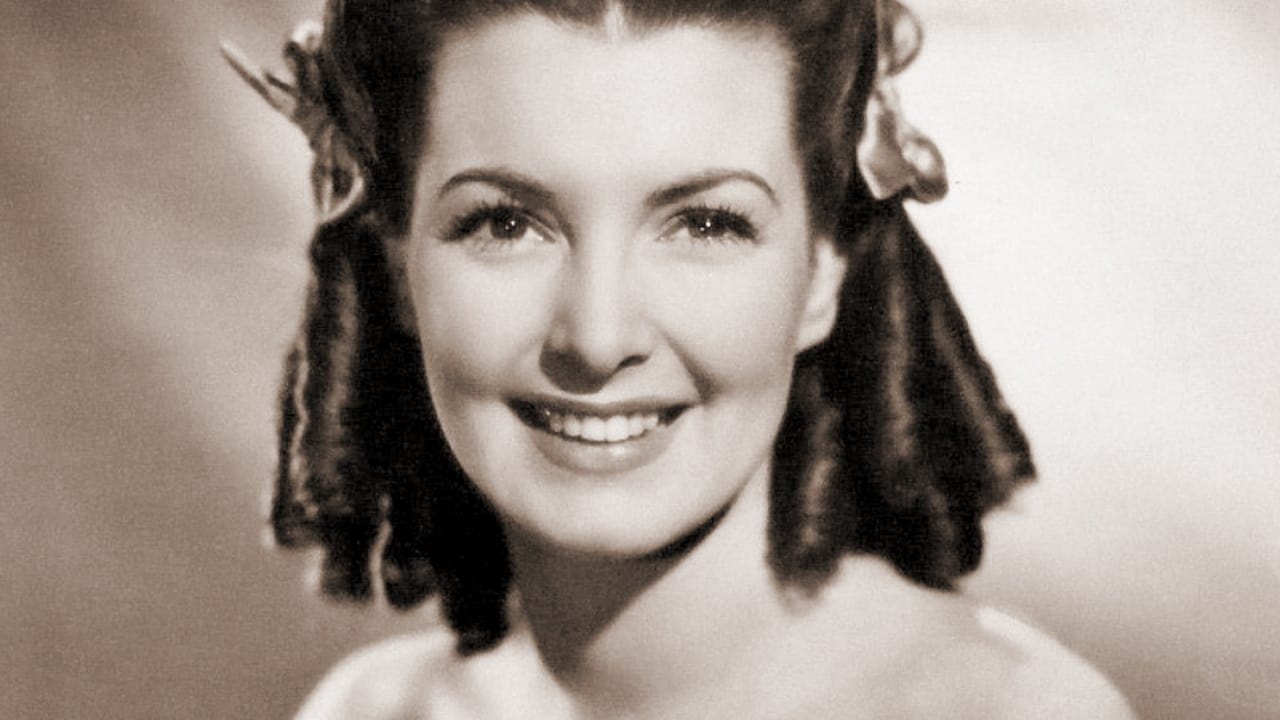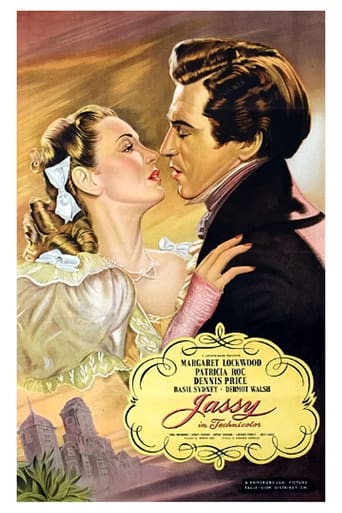Leofwine_draca
JASSY is a slow-moving historical drama/romance that has the benefit of being shot in Technicolor which looks great for 1947. The plot is set in the gentrified world of the 17th century and features a sprawling narrative involving multiple characters and the ways in which their lives intertwine. The opening scenes, in which a drunken lord ends up gambling everything he owns, are very good indeed and feature Dennis Price at his best in a brief cameo. Basil Sydney's ruthless villain is very fine too and reminded me of Lionel Barrymore in IT'S A WONDERFUL LIFE, he's the ultimate Scrooge. The plot slows down and begins to drag when the second generation characters are introduced.Romantic male lead Dermot Walsh is a bit of a drag and doesn't bring the brooding charisma that his 1950s work would allow for. Don't blame him, blame the lifeless script. Margaret Lockwood, familiar from Hitchcock's THE LADY VANISHES, is better and resolutely sassy for the era. However, the narrative feels rather long-winded and the outcome inevitable, although there are some enjoyable sub-plots, one of which includes a cast-against-type Esma Cannon as a dumb servant. The film was directed, somewhat lethargically, by Bernard Knowles, who would go on to work extensively in television in the 1950s, shooting the likes of COLONEL MARCH OF Scotland YARD.
wilvram
Set in the 1830s, in elegant period costume, JASSY is a very English tale of love, hate, marriage, adultery, sadistic husbands, scheming wives, whip-wielding fathers, capricious lovers, unrequited love, gambling addicts, snobbery, class antagonism, bigotry, a girls' boarding school, country houses and masters and servants. Oh, and two murders, one by poisoning. And a suicide. It would be nice to add: - and all in the first reel. Well, not quite.Bernard Knowles, a distinguished cameraman turned moderate director, makes something of a jumble of the first half hour, introducing too many characters and failing to distinguish those with an important part to play. It seems at first, for example, that the splendid Linden Travers as Lady Helmar will be a major protagonist, but she disappears after a couple of scenes, a typical waste of her talents. It's only with Barney's rescue of Jassy that Knowles starts to pull the disparate threads together.Margaret Lockwood is wonderful as Jassy, the remarkable, psychic, gypsy girl with immaculate English enunciation, though brought up and tutored solely by her father, the resolutely Scottish John Laurie. Coping well enough as the disadvantaged young woman working at the finishing school, she really gets into her stride as the whip-cracking - metaphorically speaking - mistress of the manor house. Looking, as she does, the epitome of glamour, it's no wonder lecherous landowner Helmar - Basil Sydney - finds it difficult to keep his hands off her. Strutting around like an overfed turkey-cock he's entertaining throughout; both he and Lockwood kept getting the giggles in their highly-charged scenes together, setting each other off, causing several re-takes. No doubt some of the corny dialogue didn't help and later, in the court-room scene, Alan Wheatley uses the old acting technique of speaking very slowly and deliberately, to take the curse off a particularly trite sentence. Matching Margaret in the glamour stakes, Patricia Roc 'The Goddess of the Odeons' is excellent as the fickle, opportunistic Dilys, a welcome contrast to her goody-goody Caroline in THE WICKED LADY. The young Dermot Walsh is convincing as one of the few wholly honest characters. All this and Dennis Price, Esma Cannon, then around fifty but playing the much younger Lindy and Ernest Thesiger too.Thought lost for many years, JASSY was located and restored in the early 1980s, receiving its first British TV transmission in December 1984 on Channel Four. I should love the opportunity to see Jassy and Dilys on the big screen and the continuing lack of a DVD release remains a mystery. Certainly for Margaret Lockwood fans, JASSY is a film to see again. And again...
jimsimpson
The last film in the popular Gainsborough Studios costume cycle is certainly beautiful to look at with sumptuous Technicolor and the company's biggest ever budget for lavish period sets.Dramatically the direction is rather lifeless with bitty editing and short Tv style scenes.The second half of the film is much better with an authorititive performance from star Margaret Lockwood and a nasty villain in Basil Sydney. Patricia Roc has a less sympathetic role than usual as the wilful, amoral Dilys but the film really misses the star power of Stewart Granger and James Mason who,several years earlier, would have played the roles take by Sydney and Dermot Walsh.A happy ending is substituted for the tragic one in the original novel..

